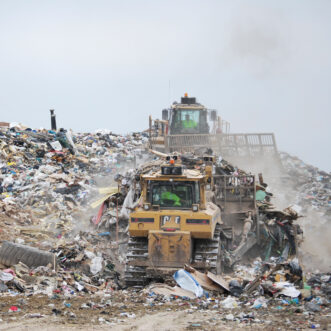Owner/Client
FirstEnergy Generation Corporation
Location
West Virginia / Pennsylvania
CEC Services
- Agronomy/Soil Science
- Waste Management Permitting
- Closure Evaluations
- Hydrogeologic Studies
- Groundwater Monitoring
- Groundwater Assessment and Abatement Studies
- Groundwater Modeling
- Geotechnical Investigations
- Data Management
- NPDES Permitting
- Seep Management Design
- Construction Bid Documents and CQA Services
- Compliance Assistance
- Wetland / Stream Delineation, Permitting, Construction, and Monitoring
- Bathymetric/Ground Surveys

Owner Objective
First Energy required assistance to evaluate life extension and closure options for the Little Blue Run Disposal Facility (LBR), a 940-acre impoundment behind a 400-foot high earth and rock dam within a 1,700-acre permit area. LBR has been used for slurry-placed disposal of coal combustion residuals (CCR) for the 2,490 MW Bruce Mansfield coal-fired power station.
CEC Approach
CEC staff were involved with LBR construction since 1975. Since 1992, CEC has provided on-going services to FirstEnergy relating to the assessment, permitting, design and operation of the impoundment, impoundment life extension, and negotiation of a Consent Decree for site closure. CEC staff provided the entire range of expertise necessary to permit and operate the LBR site. CEC prepared a Permit Modification to increase the site life by using CCR-filled geotubes to place CCR above the water level. CEC developed detailed management plans for the large volumes of CCR involved, investigated and mitigated environmental concerns, and was active in Consent Decree negotiation for site closure.
Hydrogeologic considerations have been a major driver in the design of the final site configuration and closure plan. CEC is monitoring over 400 groundwater monitoring wells, surface water monitoring points, springs, and domestic wells. CEC developed and calibrated a nine-layer (five aquifers, four aquatards), groundwater flow model covering five square miles to predict the impact various closure scenarios would have on groundwater levels and seep discharge in and around the impoundment. Information collected during hydrogeologic investigations were used to build, calibrate, and improve the accuracy of the model. Dewatering of the CCR and influence on local aquifers and springs were modeled. Results from modeling informed choices of a final closure option and capping program. The model will be used to monitoring changes to the impoundment during closure.
CEC has provided strategic planning and operational support, developed and implemented plans for direct (soil-less) seeding of hundreds of acres of CCR for interim erosion and dust control, conducted dustfall monitoring and modeling, developed and managed an extensive database, and provided construction support. As rulemaking changes and legal considerations accelerated the closure schedule, CEC evaluated, designed, and field tested various cap designs and helped negotiate the Consent Decree terms. Closure design and permitting included evaluation of 15 capping scenarios, followed by field testing the constructability of the most promising cap alternatives on the soft CCR surface. The cap evaluation process included water balance monitoring and soil and CCR pore water sampling in several capping test plots to assess the differences in stormwater quality likely under various capping scenarios. The approved cap system will use only 12 inches of final cover soil placed over an HDPE membrane, with closure completed within 12 years. The selected remedy will give FirstEnergy, regulators, and the public a high level of confidence in the closure and will dramatically reduce the economic and environmental costs of borrow area development.


